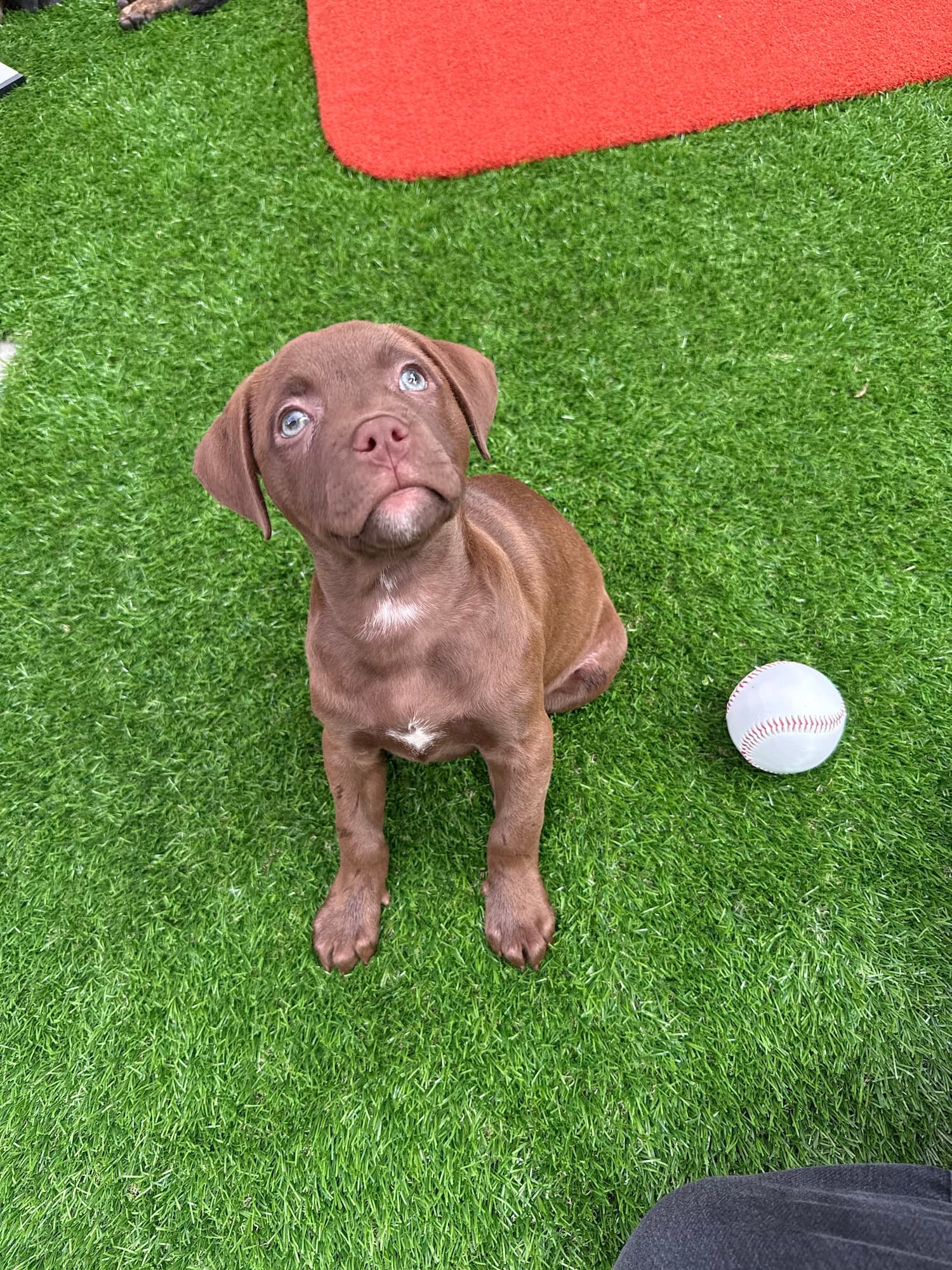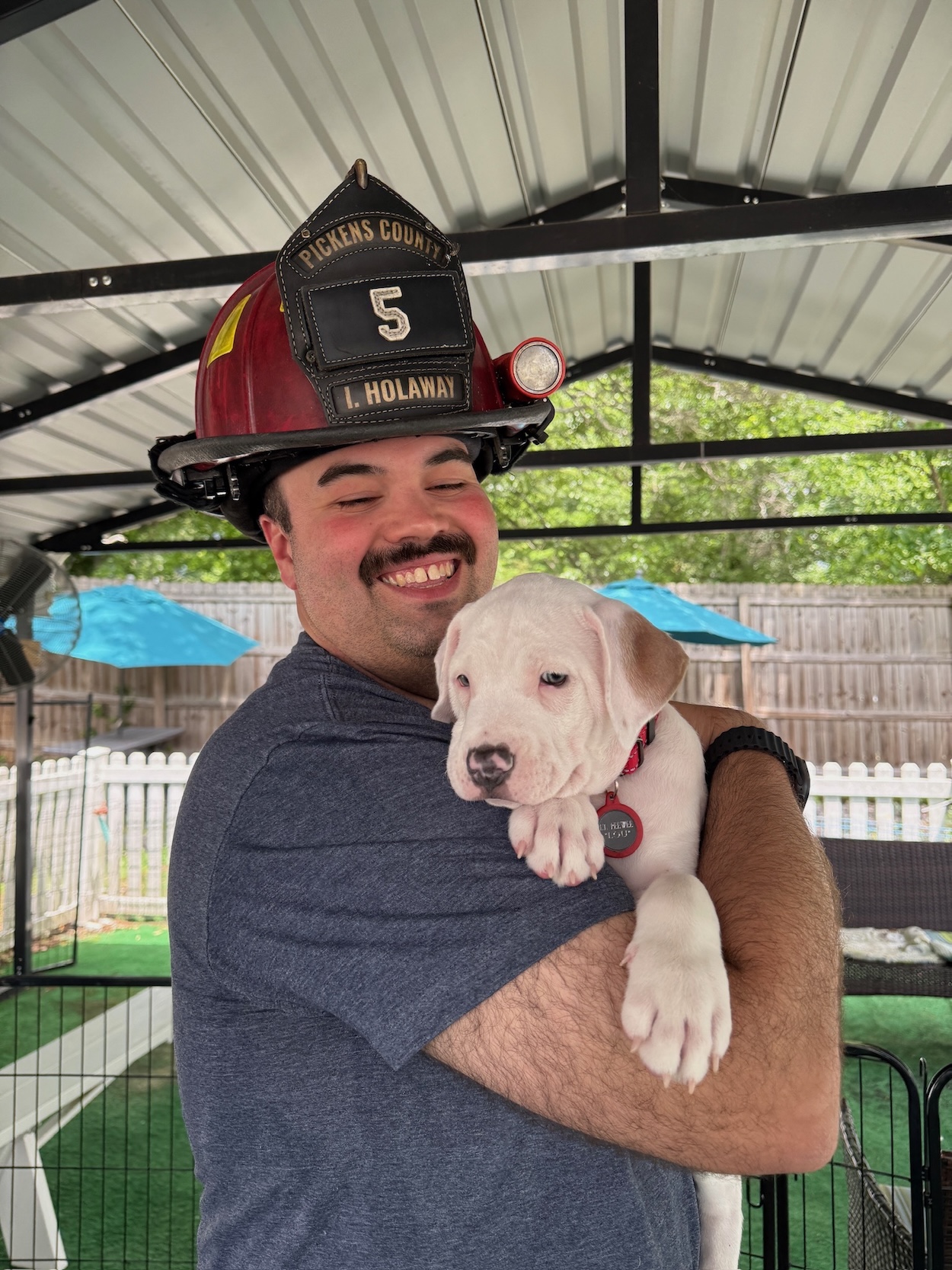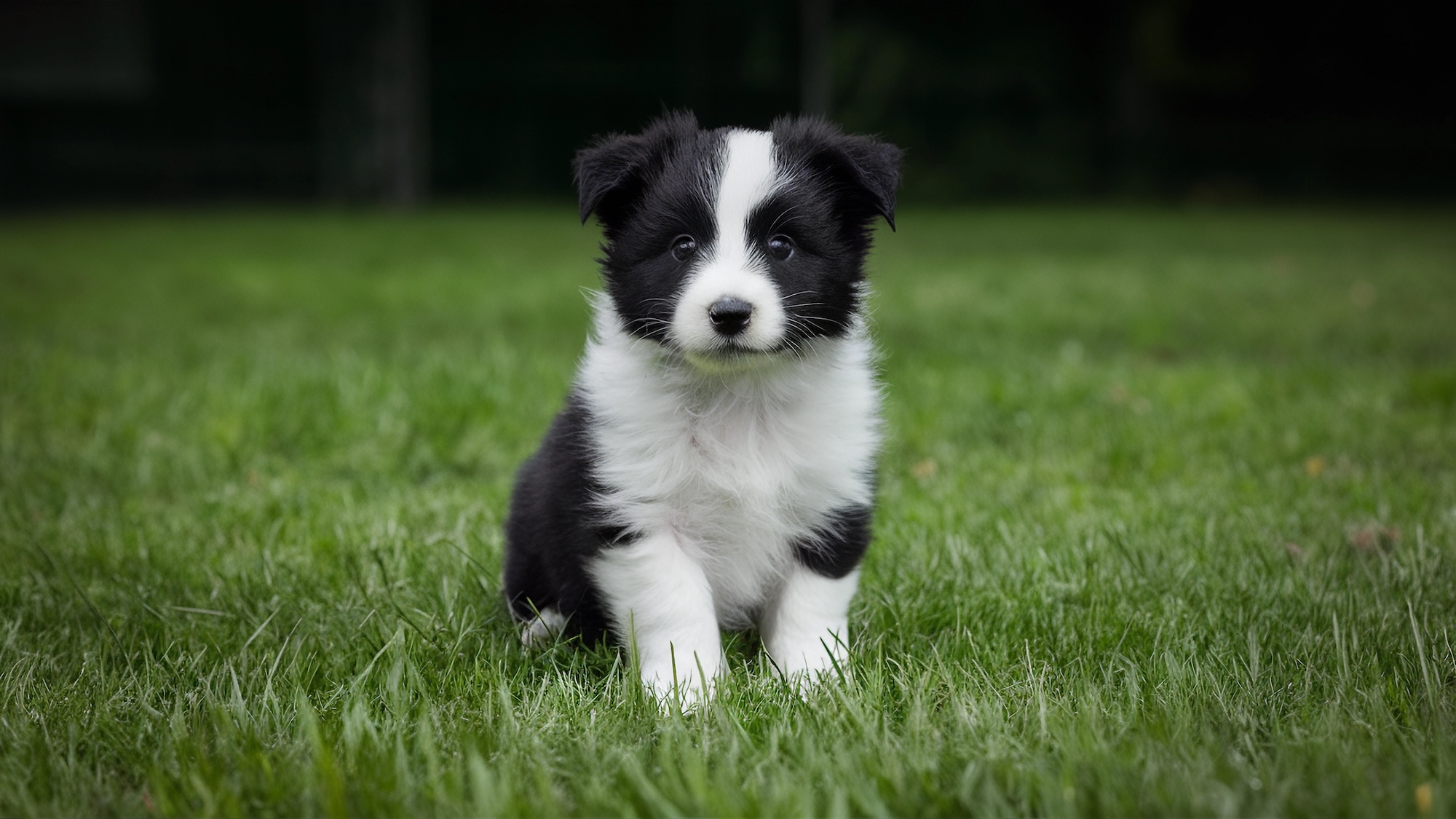This article was updated in January of 2025.
For a puppy, being connected to us via a leash and going where we go, when we want to go there, doesn’t come naturally; it has to be taught. And leash skills are among the most important things you’ll teach—walking together is a big part of a happy, healthy relationship with a dog.
We’ve all seen (and perhaps been) the people getting dragged down the street by their canine companions. That’s not an enjoyable way to walk, and can even be dangerous. According to recent data, more than 30,000 people a year go to the emergency room due to injuries sustained during dog walking, and out-of-control dogs are themselves vulnerable to all sorts of hazards.
The most important aspect of teaching your puppy to walk on a leash is to build engagement. You want your dog to think being near you is safer, and more fun, than the many competing stimuli they’ll encounter outside.
Here’s how you and your puppy can take your first steps toward a lifetime of happy walking together.
Leash training: supplies needed
- Flat collar and/or harness
- Six-foot leash
- Treats that your dog is very excited about (and a treat pouch)
- Patience
For puppies under four or five months old, it’s preferable to start with a well-fitted harness that doesn’t restrict their natural gait.
When your puppy is a bit older and you’re ready to start more “formal” training, with your dog heeling while walking out on the street, you may consider switching to a collar or head halter. If you think your dog might pull, don’t use a collar. A harness is also generally a better bet for dogs with vulnerable necks and backs.
You’ll also need a simple 6-foot leather, biothane, or nylon leash that is comfortable to hold in your hand. Avoid retractable leashes; they can cause rope-burn injuries in people, can lead to dangerous situations for dogs who aren’t well-trained, and won’t help when your goal is to teach your dog to walk near you anyway.
When to start leash training your puppy
“I have them in the harness dragging the leash inside from the start,” says Denise Herman, founder and head trainer at Empire of the Dog in New York City. This means that she starts the process of acclimating a puppy to a harness and leash even before they have all their shots and can walk freely outside. Starting inside, with fewer distractions, is best.
When you do begin walking, start slowly and in controlled areas, getting your puppy used to the collar and leash, and introducing the concept of following you around.
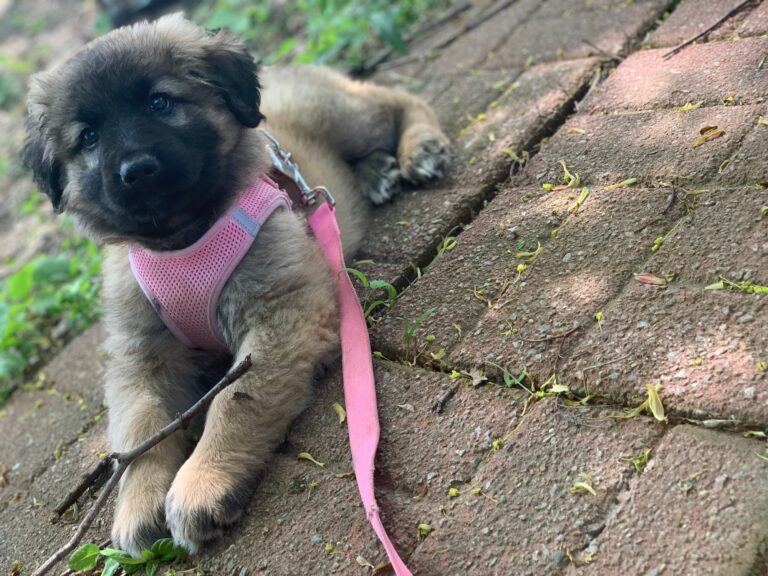
When you’re ready to walk…
Introduce the harness to your puppy: Show your puppy the harness inside the house, away from distractions, and allow them to sniff while praising and offering treats. You want to make sure that your puppy makes positive associations with this gear, instead of seeing it as something to scratch at or resist.
Put the harness on your puppy: First, put the harness on briefly while offering treats and praise, and then immediately remove it.
After a few repetitions, if your puppy is comfortable wearing the harness, start to slowly increase the amount of time that they have it on. A great way to do this is to put the harness on your puppy and then engage in play with toys, or toss treats for them to chase.
Tip: Get in the habit of putting the harness on just before mealtime and training time (which includes treats) so your dog begins to associate it with good things and look forward to it.
Introduce the leash: At first, after attaching the leash, let your puppy walk around dragging it (supervising to avoid any mishaps). Again, you can distract them with toys so the leash doesn’t become the focus of attention. Like the collar, you want to associate the leash with good things, instead of having your puppy immediately start pulling or biting it when it’s clipped on.
Start walking with small steps
Once your dog is comfortable wearing their harness and leash, you’re ready to start working on walking together.
Start indoors, in an area with limited distractions, like your living room or a hallway. You want to help your puppy understand that being near you and walking with you will be highly rewarded instead of allowing them to get too frustrated by repeatedly reaching the end of the leash.
Attach the leash, show your pup you have treats, and give them to your dog just for being near you. Next, take small steps away from your puppy—when they come to you, reward them with a treat. It can be helpful to introduce a marker word or sound—the instant that your puppy turns toward you, mark with the word, and reward with a treat.
The big goal at this stage is teaching your dog that staying near you while walking is a great choice! To accomplish this, Herman recommends carrying a lot of tiny treats, to allow frequent rewards without overfeeding. “You need to be able to give lots of feedback,” she says, “and every piece of treat is feedback.” You don’t need to wait for your dog to do what you want in this case—you can create the behavior. Use the treats to get them to follow you. “I want you to start creating a Pied Piper effect,” Herman says. “Most dogs are not that finicky. They’ll do whatever works. They’ll say, ‘You’re going to give me stuff? I’ll follow you. Let’s do that.’”
You want your dog to get used to sticking near you and walking where you’re going—so that, even though you’re connected by the leash, your dog isn’t reaching the end of it.
Be sure to have your puppy come to you for the reward instead of going to them.
Repeat the process of step, treat/praise in this area of limited distractions until your puppy walks with you a few steps. Make sure your puppy isn’t jumping up to get the treat—give it down at their height.
As your pup gets used to walking near you, lower the treat to their nose and walk forward a few steps. As they follow beside you, mark with a word and reward them with the treat. If they start to pull or amble around, lure them into position beside you and start again.
Especially in the early going, don’t be afraid to cut a training session short and try again later when your dog is more receptive. Behaviors that dogs “rehearse” a lot can stick, so you’re both better off starting with shorter, more positive walking sessions than struggling through longer ones that aren’t working. If your dog has a lot of energy, sometimes a pre-walk game of tug or fetch can help tire them out a bit so that it’s easier for them to focus on leash training.
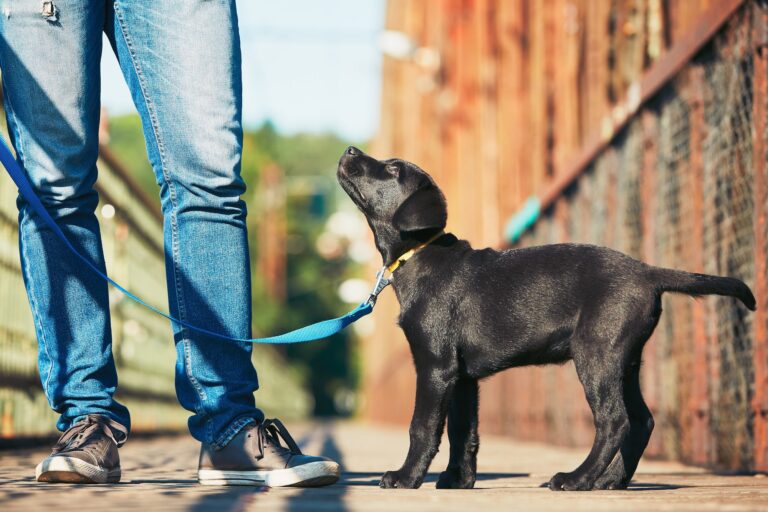
Practice walking in different environments
After practicing indoors, and getting to a point where your puppy is reliably following you on the leash, walk in more distracting areas. This “proofing” principle applies to many kinds of training—if you teach your dog a behavior in one controlled environment, it doesn’t mean they’ll reliably perform that behavior in others. Move to a place that’s still controlled, but has more distractions—like the backyard—and practice until they are reliable in this setting.
Tip: If your puppy is going potty in the backyard, use trips for potty breaks to practice walking skills (this is a double win, allowing you to work in more leash practice and training your dog to go potty in a certain spot instead of just anywhere).
Try to keep the level of engagement up as you start to increase the distractions your dog is exposed to. The key is to make yourself, and walking alongside you, more interesting than those distractions.
Don’t “level up” too fast; that is, don’t go from the backyard directly to a busy street at rush hour. Try to slowly build up the level of distraction by first starting to walk on a quiet street, maybe early in the morning, then progressing to busier areas and times. Some dog owners find it helpful to use an “intermediate” place that’s outside—like a courtyard or parking lot—before jumping to a busy sidewalk.
Give praise and treats anytime your dog is next to you or offers you a look to check in with you. As they get better at walking with you, reduce the frequency of treating. Try changing speeds and directions and having your puppy stay at your side.
Some puppies will take to the leash with little resistance; for others it may take more time. Remember that young puppies have limited focus. Don’t push them too far, too fast—stick within the window during which they’ll happily walk around without fighting the leash.
Pick a side
Depending on what’s going on around you, it might be easier or safer to have your dog on one side or another—but, in general, you don’t want your dog to be crossing back and forth while on a walk. The left side is traditionally recommended (and that’s the side to use if you plan to eventually compete in dog sports), but either side will do—and, depending on your lifestyle, it doesn’t necessarily have to be the same side all the time.
You can teach your dog to stay on one side by always treating your dog on the side where you want them for that walk. Your dog will begin to go to that side looking for the treat/reward. If your dog goes to the other side or starts pulling toward something, just get their attention with a treat—lure them back to the side you want them to walk on, then praise and feed the treat.
Herman says that, while you don’t want your dog zig-zagging and tripping you during a walk, there’s no need to keep them on one side for every walk. In fact, there can be a benefit to mixing it up from time to time. “I taught my first dog to [always] walk on one side”, Herman says, “but it became inconvenient at times when it wasn’t safe for her to walk on that side—and she was so obsessed with it because of my training that she would keep going back to that side.” As a result, she now tries to train dogs to be able to switch sides. “I tell people to pick a dominant side,” she says, “but practice using a hand signal to switch them over to the other side.” This isn’t mandatory—whatever is safe and works for you and your dog is fine—but she says it can be useful.
Troubleshooting
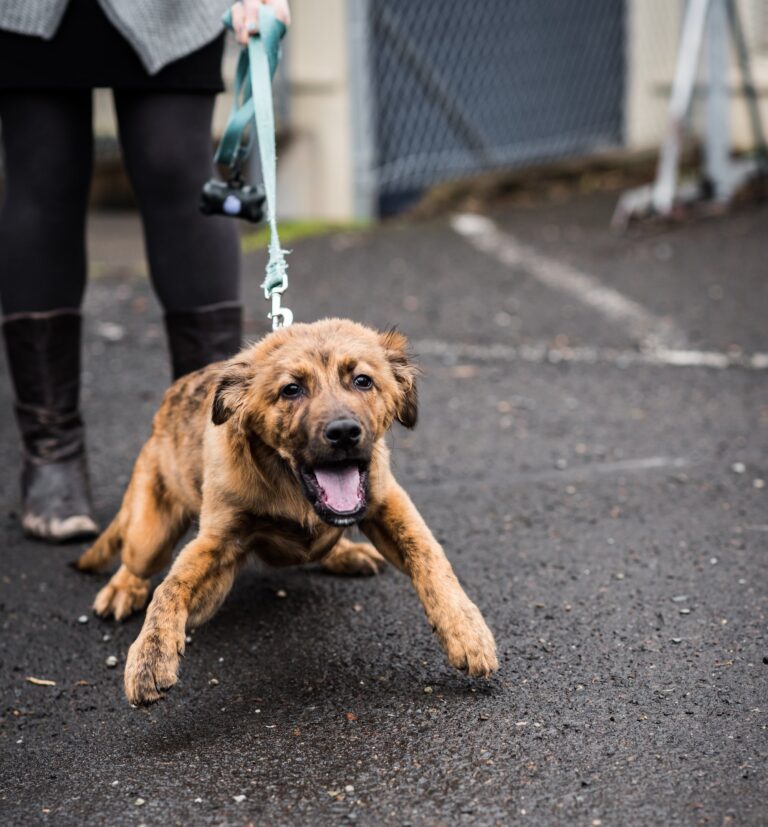
Managing pulling behavior
It’s natural for puppies to want to explore their world, which means they’ll probably pull at the end of the leash to try to get something or go somewhere. It’s important to not inadvertently reward this behavior by pulling back, or by allowing them to pull their way to where they want to be.
It’s common advice to simply stop moving if your dog pulls, but Herman says this isn’t ideal. “It’s better than doing nothing,” she says, “but only slightly.” This is because human beings are imperfect and often have places to go, so in practice it might be hard to stick with your plan—or you might have trouble getting anywhere.
Ideally, Herman says, “I am not going to lose them in the first place.” Achieving this goal means focusing on the “Pied Piper effect” she discussed earlier—setting a strong foundation so that your dog wants to stick close to you and follow you.
Tip: Don’t only offer treats after your dog has stopped pulling. Reward them when they haven’t been pulling and are simply near you. If the treat only comes out when the dog has been pulling and then stops, they might see pulling as the thing that initiates the “game.”
Reactivity
If you see something that is going to be extra challenging for your puppy—like a child playing with a ball, squirrels, or other dogs—give them extra help keeping the focus on you.
First, find ways to keep a distance from things that you know are really hard for your puppy to resist. This will keep them below threshold, meaning they can still focus and take treats. Once your dog is reacting, they are over threshold and can’t think or learn. You may need to cross the street if you see another dog—or pick walking routes that allow you to avoid or keep your distance from, say, a basketball court.
When we spoke to Maddie Messina, applied animal behaviorist and founder of Paws for Thought Dog Training in New York City, about helping fearful dogs, she said that her “golden rule is to never force a dog toward something that scares them or force them to remain in a space that is scary to them.”
When you can, try to get within view of the offending dog or object, but not close enough to trigger a negative reaction, and offer small bits of high-value treats to your puppy. The goal is to keep your puppy’s attention and help them begin to start making positive associations with the thing they are reacting to. This process of desensitization and counterconditioning, when applied patiently, can help dogs overcome fears.
If passing near a trigger is unavoidable, you can also take treats in your hand, bring them right down to your dog’s nose, keep them there until the distraction has passed—and then feed them. “Another option,” says Messina, “would be to teach a dog a quick U-turn to turn their body away from oncoming dogs, or a ‘step up’ to have them step onto a stair or platform facing away from oncoming dog.” The main thing to remember with these techniques is that the goal is to get your dog through the moment until the trigger is gone—not to make them “face their fears.”
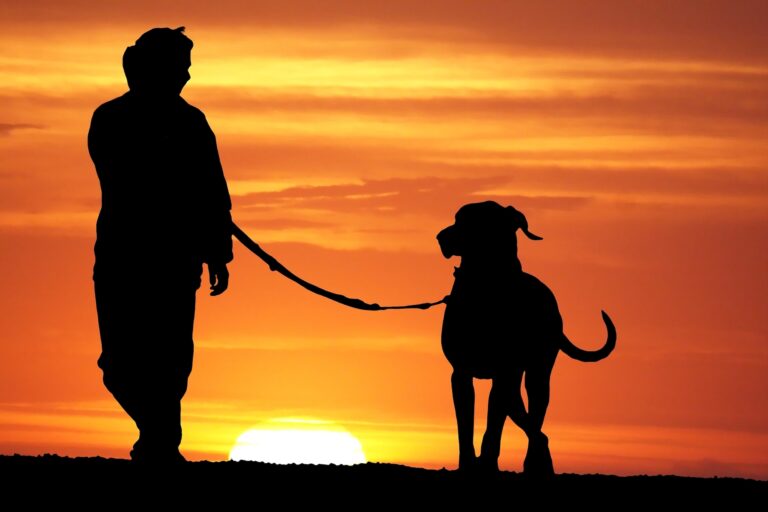
Be patient
It can be tempting to think of going for a walk as a simple act, and end up inadvertently pushing your dog too hard, too fast. It’s always OK to decrease the intensity of a walk by finding less-busy places to practice. Going slowly and keeping your walks fun is what will help your dog build positive associations with things that may otherwise overwhelm them.
If walking is stressful, don’t hesitate to seek support from a trusted dog trainer. Many dog owners who struggle with leash training find they get to a breakthrough with the help of a trainer, who can help create a personalized plan for you and your dog.
